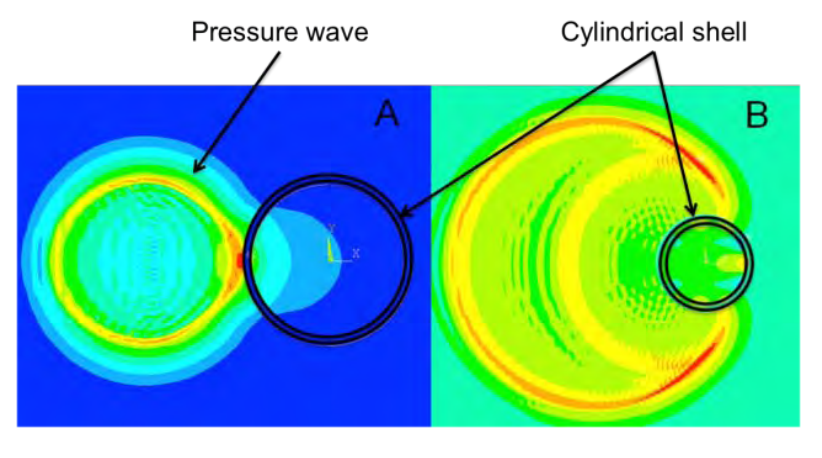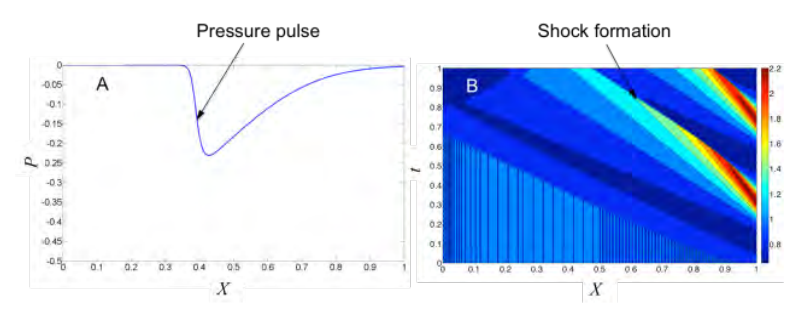![]() Blast Wave Interactions with Soft Tissue Matter
Blast Wave Interactions with Soft Tissue Matter
PI: Prof. Bala Balachandran
The interaction of blast waves with the human head involves propagation of nonlinear stress/strain waves within the brain, and this propagation is characterized by the transfer of a large amount of energy at high strain rates in a short time window. Experiments with swine and rat brain tissue subjected to tension, compression, and shear loads indicate that brain tissue behaves as a nonlinear visco-elastic material. Brain tissue material nonlinearities and heterogeneity are likely to produce localization of stresses and strain, and this localization may help understand mechanisms of brain injury.
The current studies have been carried out with the aim of developing reduced-order models to aid the following: i) obtain fundamental insights into wave propagation phenomena in the skull-brain system, ii) understand the influence of nonlinear
visco-elastic properties on the dynamic behavior of rod-like structures, and iii) experimental characterization of soft tissue. The accomplishments for this year include the following:
1) Development of a basic non-linear viscoelastic model to mimic brain tissue behavior. The model parameters can be adjusted with available experimental data.

Nonlinear visco-elastic model and comparison between experimental data and estimated model responses
2) Numerical simulations of the interaction between acoustic pressure waves and cylindrical fluid filled shells were carried out by using ANSYS®. Simulations confirm the fact that external pressure waves do get through the skull and produce pressure oscillations in the brain matter.
3) Development of a continuous nonlinear viscoelastic rod model to study wave propagation along brain fibers with aim to uncover nonlinear mechanisms such as energy localization and shock waves that could potentially lead to brain tissue damage. Understanding of the effect of load amplitude and frequency in the wave propagation phenomena could provide
knowledge that can be used in the design of more effective protective equipment.

(Left)Detail of the FEM mesh; (Right) Results obtained at two time instances of the numeric simulation

(Left) Compressive pressure pulse generated by an exponential load; (Right) Stretch contour showing shock wave formation in the rod
The predictions of the reduced-order models can help understand the role of material nonlinearity in determining the blast response as well as guide the formation of a complete response picture through detailed three-dimensional simulations.

